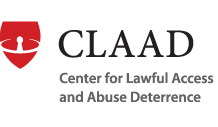A national organization that fights prescription drug abuse is sounding the alarm about the possibility of pain pills without safety features being released to pharmacies across the nation. The nonprofit Center for Lawful Access and Abuse Deterrence (CLAAD) is urging the FDA to prevent the return of crushable versions of OxyContin and Opana.

Under government pressure, the makers of these powerful opioid drugs reformulated their products to prevent abuse. The new versions of the drugs are resistant to crushing, making it impossible to smoke, snort or inject the drugs in order to circumvent their time-release formula. Studies have shown that prescription drug abusers and dealers are less interested in the new versions of the drugs because of their tamper-resistant features.
The Generics Might Not Be Safeguarded
Despite evidence that reformulation of painkillers has reduced abuse, several drug companies have requested FDA approval for generic versions of these drugs. The generic pills, which would have no abuse-deterrent features, could be released to pharmacies early in 2013.
CLAAD recently sent a letter to the FDA urging the agency to halt the marketing of generic versions of OxyContin and other opiate drugs without abuse-deterrent features. The letter was co-signed by several other public health organizations, including the American Academy of Pain Management and The Partnership at DrugFree.org. A bill that is currently before the U.S. House of Representatives would require drug manufacturers to use tamper-resistant formulas for all opioid painkillers, including the generic versions of OxyContin and Vicodin. The bill is not expected to be approved before the expected release of the generic formulas.
An unfortunate side effect of the reformulation of OxyContin and the drop in its abuse has been an associated rise in heroin abuse. Research reported by the New England Journal of Medicine indicates that making OxyContin more difficult to crush led many people to turn to the next easiest drugs to abuse. Besides a rise in the use of heroin, researchers found an increase fentanyl and hydromorphone abuse.
Although many drug experts suspected that opioid drug addicts would turn to other drugs, no precautions were taken to help people who were addicted to OxyContin or Opana before the reformulated versions of the drugs were introduced.
